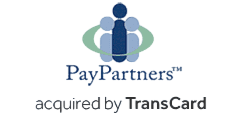Get More Out of Your Systems
We know how much you’ve put into your legacy application; it’s time to give it a new life. We’ll help you overcome the limitations of your legacy systems and maximize the value of your previous investments. With modernization, you can expect rocket-fast releases, improved security, and a better all-around software experience for you and your clients.
We unlock the potential of software through:
Common Questions & Concerns Softjourn Can Help You Answer
How do I know if it’s time to modernize my application? We will help you determine the status of your application and our experts know the telltale signs of legacy systems needing an upgrade.
Is it necessary to fully modernize my legacy systems all at once, and will there be significant effort or downtime? We recommend incremental upgrades for the majority of our clients. This way, you will be able to continue using your application during the modernization process, while enjoying progressively implementing a new software ecosystem.
What are the biggest risks if I choose to modernize or continue with my legacy systems? Our advisors will outline technical and business risks that could occur when using outdated technologies or deciding to upgrade.
Our expert legacy application modernization services include providing a modernization plan tailored to your business needs, as well as upfront information on costs and time estimates.
By working with a reliable service provider you will avoid common pitfalls that can come with upgrades, such as downtime, poor user experience post-upgrade, and lost data.
Know if your current application can support market must-haves, or if a rewrite is necessary to maintain competitiveness.
Common Questions & Concerns Softjourn Can Help You Answer
Wondering whether you should modernize first, then innovate, or provide creative extensions first, then rewrite your legacy systems? Softjourn’s experts have over 20 years of experience in advising clients and we are confident that we can give you insights that will bring you success on your modernization journey.
We will help you continue getting value from your existing applications and find the most economical path forward when modernizing.
We’re here to help you understand the real lifespan of your current application, its technologies, and more—including what works for now, and what’s needed for the future.
Many clients are still determining whether their users will like the upgraded software as much as they liked the existing software. Modernization not only performs like the existing software, it often performs better.
Is there a risk of key data or features being lost during reengineering? While it may seem daunting to make changes to your system, you can feel confident that all of your important features will be included in upgrades when you work with a reliable service provider, like Softjourn.
Common Questions & Concerns Softjourn Can Help You Answer
How do I know if it’s time to modernize my application? We will help you determine the status of your application and our experts know the telltale signs of legacy systems needing an upgrade.
Is it necessary to fully modernize my legacy systems all at once, and will there be significant effort or downtime? We recommend incremental upgrades for the majority of our clients. This way, you will be able to continue using your application during the modernization process, while enjoying progressively implementing a new software ecosystem.
What are the biggest risks if I choose to modernize or continue with my legacy systems? Our advisors will outline technical and business risks that could occur when using outdated technologies or deciding to upgrade.
Our expert legacy application modernization services include providing a modernization plan tailored to your business needs, as well as upfront information on costs and time estimates.
By working with a reliable service provider you will avoid common pitfalls that can come with upgrades, such as downtime, poor user experience post-upgrade, and lost data.
Know if your current application can support market must-haves, or if a rewrite is necessary to maintain competitiveness.
Common Questions & Concerns Softjourn Can Help You Answer
Wondering whether you should modernize first, then innovate, or provide creative extensions first, then rewrite your legacy systems? Softjourn’s experts have over 20 years of experience in advising clients and we are confident that we can give you insights that will bring you success on your modernization journey.
We will help you continue getting value from your existing applications and find the most economical path forward when modernizing.
We’re here to help you understand the real lifespan of your current application, its technologies, and more—including what works for now, and what’s needed for the future.
Many clients are still determining whether their users will like the upgraded software as much as they liked the existing software. Modernization not only performs like the existing software, it often performs better.
Is there a risk of key data or features being lost during reengineering? While it may seem daunting to make changes to your system, you can feel confident that all of your important features will be included in upgrades when you work with a reliable service provider, like Softjourn.
Avoid Common Modernization Mistakes

Many companies jump into modernization without a clear strategy, wasting resources and misaligned outcomes. Ensure that your modernization efforts align with long-term business objectives, customer needs, and operational efficiency.

Data is the backbone of any application, and poor planning can lead to loss, corruption, or inconsistency. A well-structured migration strategy, including backups and incremental transfers, is crucial for a seamless transition.
If your current software system is giving you security, maintenance, or user issues, or is no longer able to meet the needs of your business, it may be time to consider upgrading your application. These are the most common reasons to upgrade your legacy systems:
Using outdated software can compromise business efficiency and revenue while costing you additional resources and talent. Modernization or upgrading can:
Legacy software can put company data at risk, which may lead to compliance issues and potential legal penalties, as well as damage to a business's reputation. It is important to consider pursuing legacy application modernization services to ensure you’ll have:
Outdated and poor-quality systems can be slow and prone to crashing, leading to reduced efficiency and productivity. Modernizing or reengineering these systems can improve their performance and efficiency, helping businesses:
App Modernization Case Studies
Learn how Softjourn modernizes legacy systems to unlock new capabilities and improve business performance. From cloud migrations to app upgrades, our modernization services help companies stay competitive—explore our case studies for more insights.
The Benefits of Modernizing Your Application

Your systems will be running faster and better than ever, able to handle heavier loads and perform with enhanced productivity.

Don’t be hindered by your legacy systems; give your business its best chance to succeed on the market by taking advantage of the latest and best technology and features.

Through modernizing, you will ensure better protection of sensitive user and company data. Plus, upgrades often will improve compliance with industry standards and regulations.

A modernized system will lower your support costs and reduce the overall time and resources required to maintain your application.

Upgrades allow you to be confined so that your systems will be able to support future growth.

Most upgrades will provide better ease of use for your users, leading to increased customer satisfaction and loyalty.
Transform your business today with our expert system modernization services. Contact us to learn more.
Right Approach to Modernize Your Systems
Migration and enhancements:
Progressive enhancements:
Correction and growth:
Complete software reengineering:
Engagement Models
Technology Expertise
We stay up-to-date with various modern tools and technologies to conduct software code audits that will provide your product's actual long-term value and security. Our team of Solutions Architects and technology experts will help you select the right tech stack based on your project needs and build a process to ensure that all of your goals are met.
We will identify critical and non-critical issues and provide recommendations, along with a checklist, to give you a clear path forward even after the project ends. With Softjourn’s legacy application modernization services, you can feel confident that you’ll be provided with the best possible solutions for your business needs.
What Services We Offer
Whether upgrading an existing code or creating a new one, our most important expertise is a proven approach to mitigating risk and containing costs. Discover more about Softjourn's expert Consulting Services.
Often clients don’t know what product they need, but do know the results they want. Our job is to help define the product and develop optimal solutions to get those results. Discover more about Softjourn's expert Project Discovery Services.
To compete, our clients continually need to provide new and better services. We have our own R&D Centers – started in 2008 – uniquely positioned us to do just that. Discover more about Softjourn's expert Research & Development Services.
Our developers and illustrators are experts at UI and UX design. They will work with you to understand your needs in going from idea to prototype to deployment faster and at less cost. Discover more about Softjourn's expert Digital Product Design Services.
Financial software development has grown exponentially in recent decades. Softjourn is the solution to help you define and develop forward-thinking technology that gets real-world results. Discover more about Softjourn's expert Software Engineering Services.
Our core belief is that analyzing and testing is critical because the essential role of software is so important. In the process, our Quality Assurance team helps you create superior products. Discover more about Softjourn's expert QA Services.
Since day one, we’ve provided each customer with application support and maintenance services on every project. It’s why we’re a proven, trusted partner and reliable asset. Discover more about Softjourn's expert Application Maintenance Services.

Client Testimonials
Tacit Corporation chose Softjourn as their technology partner, impressed by our technical expertise and direct approach. Brenda Crainic, CTO of Tacit, highlighted, "We grew a lot as a company over the last 12 years and our processes changed, many of the current development practices being initiated by the team. I count a lot of my team’s expertise and I am confident in our ability to deliver cutting-edge technology for our clients.
Our team’s dedication to understanding Tacit's needs has been instrumental in enhancing their platform’s capabilities, ensuring robust solutions. This ongoing collaboration underscores our commitment to delivering high-quality, innovative services that support our clients' visions." - Brenda Crainic, CTO and Co-Founder of Tacit
App Modernization FAQs
A legacy system is an outdated computer system, application, or technology that is still in use, often because it is too expensive or time-consuming to replace.
Legacy systems modernization can benefit your business in numerous different ways. For example, when updating or replacing your existing solution, you can enhance security, make your software scalable, comply with the required regulations, and adjust it to your current business goals. On top of that, your application will be more up-to-date. It will allow for robust integrations and increase your company’s competitiveness.
You can conduct legacy software modernization by applying different approaches and techniques like rehosting, rebuilding, refactoring, reengineering, replacing, etc. To be more precise, you can partially migrate your system or rebuild it from scratch. Of course, each approach has its pros and cons. So when deciding how to modernize your application, prioritize your business needs and consider potential challenges.
There are several steps that should be included when modernizing a legacy system:
- Assess the current system: Before starting the modernization process, it is important to understand the current system and its limitations. This includes evaluating the hardware, software, and data involved in the system.
- Develop a plan: Based on the assessment of the current system, a plan should be developed that outlines the steps needed to modernize the system. This may include identifying any new hardware or software that will be needed, as well as any changes that need to be made to the system's data.
- Implement the plan: The modernization process involves implementing the changes outlined in the plan. This may involve migrating data from the legacy system to a new system, updating hardware or software, or making changes to the system's architecture.
- Test and validate: After the modernization process is complete, it is important to test the new system to ensure that it is functioning properly and meets the organization's needs.
- Deploy and maintain: Once the new system has been tested and validated, it can be deployed and put into use. Ongoing maintenance and updates will be needed to ensure that the system remains functional and secure.
Some of the risks of modernizing a legacy system include:
- Cost: Modernizing a legacy system can be expensive, especially if it involves replacing the computing environment or rewriting the software.
- Downtime: The modernization process may require the legacy system to be offline for a period of time, which can disrupt business operations.
- Data loss: There is a risk of data loss during the migration process, which could have serious consequences for the organization.
- User acceptance: Employees may resist using a new system, especially if the UX is significantly different from the legacy system they are used to. This can lead to reduced productivity and a slower transition to the new system.
Because modernizing legacy applications will help optimize the monolithic architecture of old applications with modern cloud-based solutions that brings scalability, agility, performance, speed, security, efficiency, and a better experience for users.
A legacy system is an application, software, or hardware which uses outdated technologies. Operating such an app often involves security risks, may be challenging to maintain, and doesn’t allow for modern integrations. For example, many federal, financial, medical, and even retail organizations are still operating legacy systems. In particular, they may be based on the COBOL programming language that developers rarely use today.
The timeline of legacy system transformation is custom and depends on your individual project’s specifics. For example, a partial cloud migration may take 2–4 months. Meanwhile, a complex modernization process, like system rearchitecting, will likely take a year or more.






























